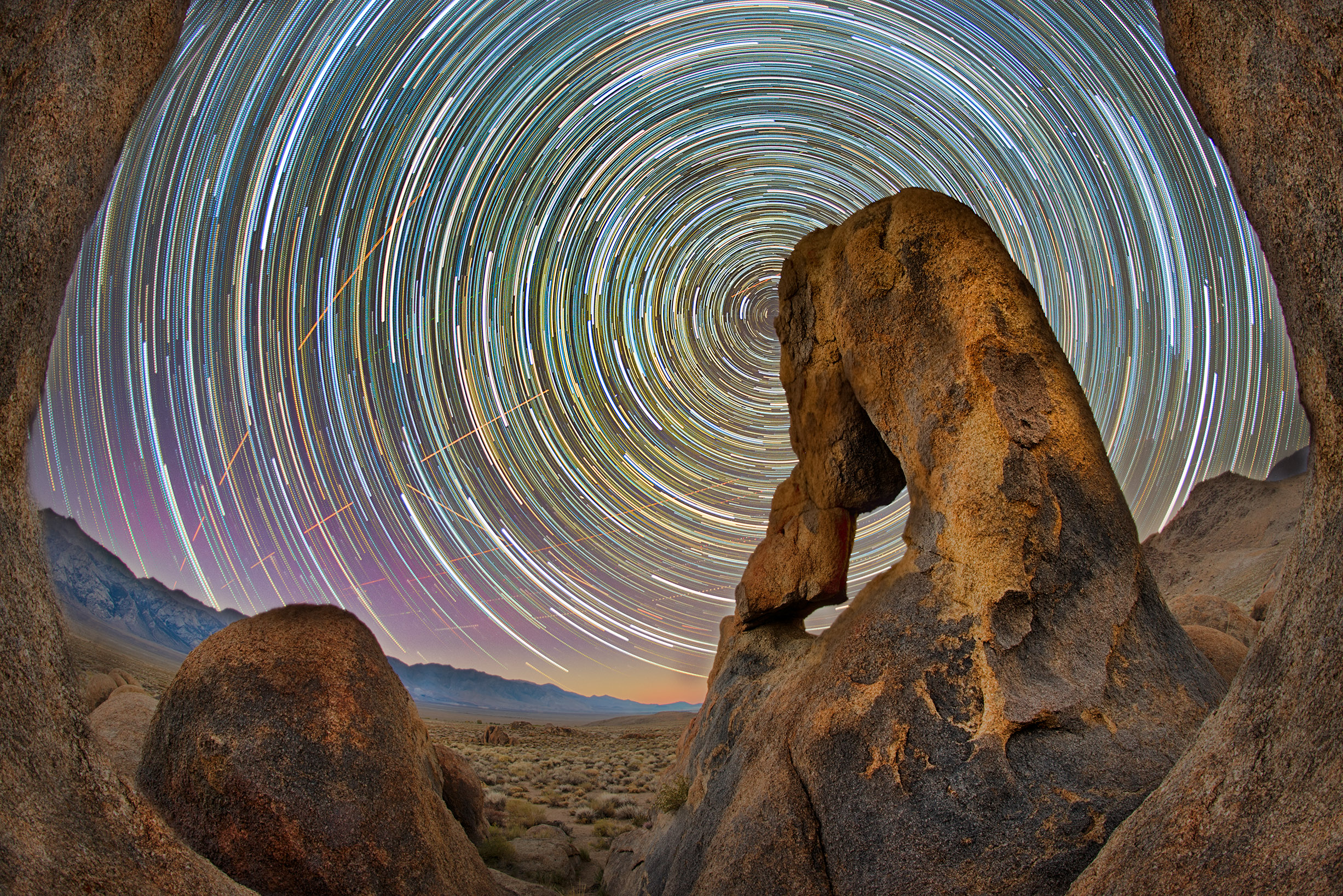Wedged in a crack behind the aptly-named Ladyboot Arch in the Alabama Hills of the eastern Sierra near the Nevada border of California, I already knew this wasn’t going to be the perfect image. For one thing, the lens I was using, my dearly beloved Nikkor 16mm f/2.8 horizontal fisheye had blown over in an accident a few days earlier, with a nasty crack on the front optical element.

The focus of the lens was also jammed, stuck (fortunately) on infinity. That is, nobody wants focus to be jammed, but if an extreme wide-angle has to have a single focus, infinity would be the choice.
Ultimately, I had no idea whether shooting through this damaged lens would produce reasonable results.
I was also faced with a problem of topography: the crevice I was in would not let me set the tripod up normally, and I had to spread the legs and wedge them against the rock walls.
Finally, all was ready to start the timer on the intervalometer. But for reasons unknown, it simply wouldn’t work with the camera.
Falling back on “Plan B” with grace under pressure is a normal part of any photographer’s toolkit. My Nikon camera has on-board intervalometer functionality, admittedly with an inscrutable user interface. The limitation is that the shutter speed maxes out at 30 seconds.
Normally, my practice with this kind of photography is to set the camera to Bulb, and shoot a sequence of wide open (or nearly wide-open) captures at four minutes (using ISO 400).
Dropping the shutter speed down to 30 seconds meant I was exposing for 1/8 the duration of time I normally would (because 30 seconds is 1/8 of 4 minutes). To compensate, I needed to boost the ISO by a factor of eight, from 400 to 3,200.
The final exposure data was 141 exposures, each exposure made at 30 seconds, f/2.8, and ISO 3,200. Post-production was in Photoshop, using the Statistics script with stack mode set to Maximum.
Here’s an image from the front of Ladyboot Arch, and another image from the rear of the arch (made with my other camera, a working intervalometer, and the Zeiss 15mm wide-angle lens!).
Night photography workshops are indeed a great deal of fun, and I am looking forward to a repeat engagement in Lone Pine and the Alabama Hills, with my friend and distinguished night photographer Steven Christensen of Star Circle Academy as co-teacher in 2018. The dates are Friday, September 7 through Monday, September 10, 2018. Click here for more information!
Pingback: Harold Davis—My Best of 2017
Pingback: Layers and the Landscape